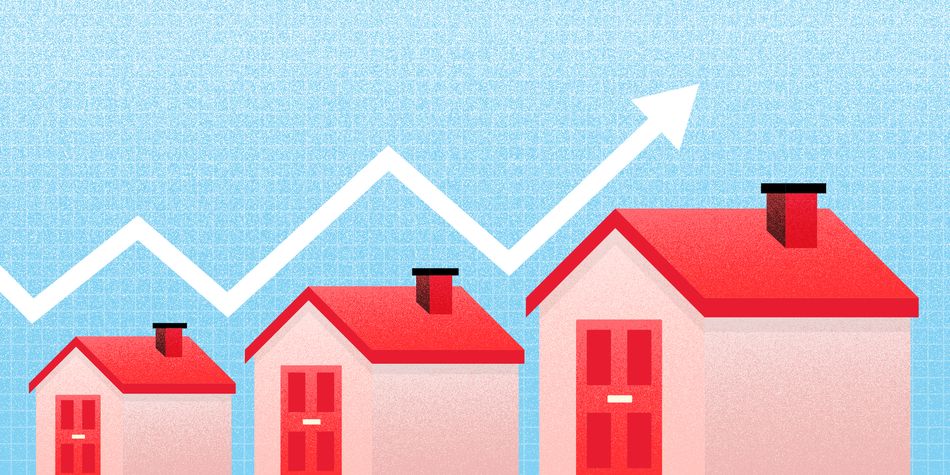Your home might be worth far more than you think – especially if you’ve lived there for 20 years or more.
New figures from property portal Zoopla show that the average home in the UK has risen in value by 74% over the past two decades, creating potential windfalls for long-term owners.
If you're mortgage-free, downsizing could help unlock this equity, whether to fund retirement, support family or make a move.
Here, Which? highlights the areas with the biggest and smallest increases in property values over the past 20 years, and the key questions to ask if you're thinking about downsizing.
Which areas have seen the biggest rise in house prices?
It's no surprise that the London borough of Kensington and Chelsea tops the list for house price growth over the past 20 years. But even so, the £626,400 increase in average property values is still a head-turning statistic.
House prices in the South East and East of England have also seen values more than double in some regions, according to Zoopla.
In Wales, Monmouthshire recorded the biggest rise. The county, which borders England, is known for its countryside charm and proximity to the scenic Wye Valley.
The table shows the areas in each region where average property prices have risen the most since 2005.
Source: Zoopla. The average price of a property in April 2005 in Northern Ireland was £113,400. The average in April 2025 was £184,200. Local authority data for Northern Ireland is unavailable due to the sample size.
Which areas have seen the smallest rise in house prices?
Sunderland has seen the lowest house price growth over the past two decades, according to Zoopla’s analysis.
Several coastal towns also feature among the slowest-growing areas in their regions, including Blackpool, Great Yarmouth and Plymouth.
The table shows the area in each region where average property prices have risen the least since 2004.
Things to consider before downsizing
Zoopla’s analysis shows that homeowners who’ve stayed in the same property for two decades have often seen a sharp rise in its value.
For some, that opens the door to downsizing. But moving to a smaller home isn’t a decision to rush. Here are four key questions to consider first.
- Why are you downsizing? Be clear about your goal. If it’s to free up cash, work out how much you’ll actually unlock once you’ve factored in fees, moving costs and any renovations.
- Can you find the right property? A limited supply of smaller homes in some areas can make downsizing tricky. Research the market in the area you’re considering to see what’s available and what it might cost.
- Are you ready to leave your current home? If you’ve lived there for years, moving on can be tough. Think about the emotional impact, particularly if you’re relocating to a new town or away from family.
- Will your new home suit you long-term? Choose a property that works not just for now, but for the future too. Think about layout, accessibility and whether it can adapt if your needs change.
The cost of downsizing
While downsizing can potentially unlock significant equity, it's important to understand the costs involved before making the move.
The average cost of moving is now around £14,000, according to research by comparison site Reallymoving.
The biggest outlay is usually stamp duty (called Land Transaction Tax in Wales and Land and Buildings Transaction Tax in Scotland).
For example, buying a £300,000 home in England or Northern Ireland would mean a £5,000 stamp duty bill. For a £500,000 home, that rises to £15,000.
Other expenses soon add up — including estate agent fees, legal costs, removals and surveys.
Even after these costs, many homeowners who’ve cleared their mortgage may still be able to release substantial equity. But the amount you unlock will depend on where you live.
Our previous investigation found that London downsizers could free up as much as £414,000 in cash terms by moving from a four-bedroom to a two-bedroom home. But proportionally, that’s just 46% of the property’s value — the lowest return of any UK region.
By comparison, those downsizing in the North East could unlock around 56% of their home’s value, reflecting the wide regional variation in how far your money goes.
Will house prices continue to rise?
Most major estate agents, banks and property portals are predicting house price growth in 2025.
Forecasts vary, with estimates ranging from 2% to 4%. Savills and Rightmove sit at the higher end of that scale, while Knight Frank recently revised its 2025 forecast from 2.5% to 3.5%, pointing to expected Bank of England base rate cuts as a key driver.
However, it's important to note that these figures reflect national averages and forecasts vary by region.
For example, Savills forecasts stronger increases of around 5% in the North West, North East, Yorkshire and the Humber, and Wales. It predicts the lowest growth will be in the South West and East of England, with prices expected to rise by 2.5%.








